- All Headlines


Top 40 Most Popular Case Studies of 2021
Two cases about Hertz claimed top spots in 2021's Top 40 Most Popular Case Studies
Two cases on the uses of debt and equity at Hertz claimed top spots in the CRDT’s (Case Research and Development Team) 2021 top 40 review of cases.
Hertz (A) took the top spot. The case details the financial structure of the rental car company through the end of 2019. Hertz (B), which ranked third in CRDT’s list, describes the company’s struggles during the early part of the COVID pandemic and its eventual need to enter Chapter 11 bankruptcy.
The success of the Hertz cases was unprecedented for the top 40 list. Usually, cases take a number of years to gain popularity, but the Hertz cases claimed top spots in their first year of release. Hertz (A) also became the first ‘cooked’ case to top the annual review, as all of the other winners had been web-based ‘raw’ cases.
Besides introducing students to the complicated financing required to maintain an enormous fleet of cars, the Hertz cases also expanded the diversity of case protagonists. Kathyrn Marinello was the CEO of Hertz during this period and the CFO, Jamere Jackson is black.
Sandwiched between the two Hertz cases, Coffee 2016, a perennial best seller, finished second. “Glory, Glory, Man United!” a case about an English football team’s IPO made a surprise move to number four. Cases on search fund boards, the future of malls, Norway’s Sovereign Wealth fund, Prodigy Finance, the Mayo Clinic, and Cadbury rounded out the top ten.
Other year-end data for 2021 showed:
- Online “raw” case usage remained steady as compared to 2020 with over 35K users from 170 countries and all 50 U.S. states interacting with 196 cases.
- Fifty four percent of raw case users came from outside the U.S..
- The Yale School of Management (SOM) case study directory pages received over 160K page views from 177 countries with approximately a third originating in India followed by the U.S. and the Philippines.
- Twenty-six of the cases in the list are raw cases.
- A third of the cases feature a woman protagonist.
- Orders for Yale SOM case studies increased by almost 50% compared to 2020.
- The top 40 cases were supervised by 19 different Yale SOM faculty members, several supervising multiple cases.
CRDT compiled the Top 40 list by combining data from its case store, Google Analytics, and other measures of interest and adoption.
All of this year’s Top 40 cases are available for purchase from the Yale Management Media store .
And the Top 40 cases studies of 2021 are:
1. Hertz Global Holdings (A): Uses of Debt and Equity
2. Coffee 2016
3. Hertz Global Holdings (B): Uses of Debt and Equity 2020
4. Glory, Glory Man United!
5. Search Fund Company Boards: How CEOs Can Build Boards to Help Them Thrive
6. The Future of Malls: Was Decline Inevitable?
7. Strategy for Norway's Pension Fund Global
8. Prodigy Finance
9. Design at Mayo
10. Cadbury
11. City Hospital Emergency Room
13. Volkswagen
14. Marina Bay Sands
15. Shake Shack IPO
16. Mastercard
17. Netflix
18. Ant Financial
19. AXA: Creating the New CR Metrics
20. IBM Corporate Service Corps
21. Business Leadership in South Africa's 1994 Reforms
22. Alternative Meat Industry
23. Children's Premier
24. Khalil Tawil and Umi (A)
25. Palm Oil 2016
26. Teach For All: Designing a Global Network
27. What's Next? Search Fund Entrepreneurs Reflect on Life After Exit
28. Searching for a Search Fund Structure: A Student Takes a Tour of Various Options
30. Project Sammaan
31. Commonfund ESG
32. Polaroid
33. Connecticut Green Bank 2018: After the Raid
34. FieldFresh Foods
35. The Alibaba Group
36. 360 State Street: Real Options
37. Herman Miller
38. AgBiome
39. Nathan Cummings Foundation
40. Toyota 2010
Related Stories

Top 40 Case Studies of 2022-23

Top 40 Most Popular Case Studies of 2020

Student Project Examines Racial Disparities in Retirement Savings
👀 Turn any prompt into captivating visuals in seconds with our AI-powered design generator ✨ Try Piktochart AI!
14 Case Study Examples | Plus Tips & Templates

When you’re looking to buy a new product on Amazon, how do you decide which of the three thousand options to purchase? If you’re anything like me, you head straight to the customer reviews for an honest, unbiased evaluation.
Case studies are basically the 5-star Amazon reviews of your product or service. They help you showcase the great experience that real customers had and help convince prospects to take the leap.
In this article we’re discussing what all great case studies have in common and looking at a variety of case study examples to see what you can learn from each one.
What All Great Case Studies Include
The famous opening line from Leo Tolstoy’s Anna Karenina says :
“All happy families are alike; each unhappy family is unhappy in its own way.”
We’d argue the same principle holds true for case studies.
All great case studies have a few characteristics in common.
The customer is the hero of the story
And as such, they’re the focus of the case study. Following this principle helps readers see themselves in a similar situation and prevents you from accidentally portraying the customer as helpless or incompetent. They’re simply an individual or organization with a problem in need of solving.
They tell a complete story .
From challenge to long-term results, the story flows logically, making it easy for readers to follow and remain engaged.
They’re visually appealing .
Infographics, charts, professional photos, and block quotes help break up the text and make key points memorable. A clean design enhances readability so readers are more likely to make it all the way through your case study.
They end with a CTA .
At its core, a case study is a marketing tool. It should include a call-to-action that encourages readers to take the next step so they can experience similar results as the subject of the case study.
14 Case Study Examples
We’ve rounded up 14 case study examples that drive home the point and help build a case for a product or service. We’ll look at what each one does well and where there is room for improvement, giving you the insight you need to create your own compelling case study.
Government case studies
Case study 1: the £10 billion it disaster at the nhs.
Henrico Dolfing is a project manager who partners with executives and corporations to provide guidance in tech-related industries. His case study differs from many others on the list simply because Dolfing isn’t technically the customer or the service provider; he’s a subjective third party looking at what went well and what could have been improved.
The case study looks at the almost decade-long history of the National Program for IT within the NHS. Just from the title, you get a clear idea of where the article is heading.
Headings and subheadings effectively break the case study into smaller sections, but Dolfing opts not to include any graphics. A lengthy timeline in the first half of the case study offers the perfect opportunity for an infographic .
Compare a section of the original timeline to what an AI-generated timeline from Piktochart could look like—

Want to create a similar timeline for your case study? Piktochart AI creates quality infographics from any prompt– no design expertise needed.
Once he’s established his authority as an expert in this field, Dolfing sprinkles the same CTA throughout the case study, encouraging readers to engage with his lead magnet.

By the way– the lead magnet isn’t anything fancy, just a Google Form that asks for an email address and then guides readers through the 27-question assessment.
Takeaway : There’s nothing wrong with using a simple and straightforward format to connect with an audience just looking for the facts, but visuals may make it easier for them to distill the information.
Case study 2: How the Scottish Police Got £25 Million Back but Lost 3 Years on I6
At over 4,000 words, this lengthy case study from Dolfing looks at another project failure within the government.
This go around, the same timeline format is included to outline the events of the entire project. But a colorful timeline graphic comes before, showcasing the events using a month-by-month breakdown.

Quotes included in a later review of the program are included within the introduction, expanding upon the background context and demonstrating the lengths Dolfing went to in order to research this event.
The final sections, titled How Scottish Police Could Have Done Things Differently and Closing Thoughts , allow Dolfing to discuss his own insight into potential changes that could have led to a better outcome and again encourage readers to engage with his lead magnet.
Takeaway : Use third-party case studies to demonstrate your expertise in your industry or to learn from the failures of others.
Short case studies
Short case studies are perfect for clients who have a short attention span or limited time they can devote to reading a lengthy case study.
Case study 3: Intuit continues powering prosperity around the world with the help of Twilio Verify
Powerful metrics set the stage as readers begin this case study, before jumping into a basic description of the client and the solution they utilized.

The content is broken into a quick intro + three digestible sections. However, the majority of the case study focuses on the challenges that Intuit faced, only describing the solution and outcome in the final section.
Several metrics describe the results that the customer experienced, using a combination of numerals, percentages, and time-based data to paint a rounded picture of the outcome.

The results described clearly highlight how the solution was a stark contrast to the challenges that Intuit had previously experienced, when:

From taking 2-9 months per country to 3 months for over 200 countries, Twilio becomes an obvious choice for any companies experiencing a similar hurdle.
This case study is notably light on visuals, counting on the short content being enough to keep readers’ attention. It includes a couple quotes from Intuit’s principal product manager, which describe the company’s challenges but don’t comment about the solution’s effectiveness.
Takeaway: Include a mixture of metrics to emphasize the power of your solution and show readers what they can expect in working with you.
Case study 4: Automation keeps Spotify’s ad business growing year over year.
Crystal clear section headings and a mixture of graphics make this case study especially compelling and engaging.
Graphics include—
- an intro video
- an icon list of Salesforce products referenced in the case study
- a callout quote from
- an infographics of results
A lot of case studies will use headings that vaguely reference the product or client. Salesforce helps readers know exactly what they’re reading about by using headings like—
- What you need to know
- Why it matters
- What the difference looks like
The case study doesn’t follow the distinct “Challenge, Solution, Results” framework. Instead, it utilizes a problem/solution pattern that describes different ways Salesforce helped resolve hurdles the Spotify team was facing.
A variety of data points are included throughout the content and speak to improvements in several areas such as a 40% increase in sales team productivity, a 53% increase in click-through-rates, and a fivefold increase in marketing campaigns each year. No matter what challenges that readers are facing, they’re likely to feel like Salesforce is an ideal solution.
Takeaway: It’s okay to lean into simple– it makes your content skimmable and easier for readers to find what they’re looking for.
Want to quickly create your own short case study? Piktochart’s AI case study generator can make one for you in seconds. Just share your prompt and pick a template to customize within seconds.
Marketing-based case studies
Case study 5: creating the impossible ad with ai: tombras.
This case study is part of a series from the Google Editorial Team, sharing how marketing agencies use Google’s AI tool, Gemini, to undertake an impossible ad campaign.
The article begins with a snapshot of what the marketing campaign looked like, displaying just a few of the thousands of AI-generated copy lines. We love the examples, but reading the quips requires some squinting and zooming, taking away from the impact they could have had.

Fortunately, readers can catch more of the copy examples in a short video that breaks apart the wall of text and showcases the effectiveness of the AI tool.
Talk about AI can be overwhelming and even scary for some people. This case study devotes several paragraphs to explaining the implementation of Google’s AI tool so that potential users understand how they can utilize Gemini in their own business as well.
The results section is clearly identified and easy for readers to find– and it speaks to a strong outcome– but none of the data is highlighted or emphasized. If readers want to know what happened, they’re going to have to dig down into the text.

Takeaway: Include videos to appeal to a wider audience and make it easier to repurpose your case study.
Case study 6: How Dropbox increased blog traffic by 30%
Right from the title, this case study emphasizes results that the customer experienced. (BTW– did you notice how the title makes the customer the hero of the story?) Two key metrics are also introduced before any text, but act as some of the only graphics in the whole article.
Callout quotes help break up long blocks of text, and both callout quotes highlight the power of the solution that Airtable offered. Additional quotes within the text create a narrative that walks readers through the challenge, solution, and results.
However, without any section titles, the case study isn’t very skimmable, and it can be a little challenging to identify relevant themes that readers might connect with.
Takeaway: Long blocks of text may cause readers to disengage. You need graphics and headings to help guide their eyes through your content.
Case study 7: How a marketing agency increased client conversions 35% with Zapier Canvas
Here’s another case study that emphasizes results right from the start.
Every section of the article is labeled in a straightforward manner that makes it easy to follow.

Each section also includes quotes from the customer, creating a flow from one part to the next and tying all of the content together.
Since the case study is discussing the AI-powered diagramming tool that the client used, it includes a snapshot of the diagramming tool in use. This helps readers visualize an otherwise abstract concept and understand how the tool could be used for their own business.

If you’re interested in including similar visuals in your case study, check out our flowchart templates for dozens of premade templates that can be personalized to meet your needs in minutes.
Only one data point is included– the 35% increase in conversions, but additional results are also mentioned, including faster onboarding for new employees.
Takeaway: Include snapshots of your solution to help potential customers imagine what implementation would look like for them.
Case study 8: How Shapeways Increased Their Click‑Through Rates by 525%
Compelling graphics grab your attention and walk you through this entire case study.
Readers are immediately introduced to the case study subjects with a photo beneath the title (although a caption that includes names and titles could make this visual really shine).

A bulleted introduction gives you all of the necessary background for the customer.

Brand logos, a callout quote, and the colored section block break apart the text.

Finally, the results section begins with this unmissable testament to the role that Mailchimp played in the subject’s growth.
Takeaway : A mixture of graphics combined with ample white space makes your case study easy on the eyes. Visuals that pop are the perfect opportunity to highlight key results and all the praise your customer has to offer.
Education-based case studies
Case study 9: collaboration with dropbox empowers the university of florida’s land grants.
Everything about this case study speaks to maximum efficiency.
An introductory section provides basic information about the subject, and headings labeled Challenge and Solution clearly identify all of the pertinent information.
A comprehensive challenge section pinpoints the exact problems that UF was facing. This makes it easy for readers to relate and imagine how Dropbox could solve similar issues at their own school or university.
We love the callout quote combined with a photo of the subject and university logo for maximum authority and impact—

In the absence of measurable data, the case study gives specific examples of how Dropbox has benefitted the University of Florida.

Dropbox closes the page with a CTA designed to appeal to other educational institutes.

Takeaway : Don’t skimp on explaining the problems your subject was facing. Paint a detailed picture so you can show exactly how your offering resolved these issues.
Non-profit case studies
Case study 10: how reveal overhauled the way it hires, onboards and promotes employees to create a more inclusive workplace.
Although this case study is longer than most (9 pages, to be exact), it utilizes that real estate to showcase the challenge and results in a visually stunning manner.
Just in the sidebar you’ll find—
- block quotes
The content itself is broken into sections clearly labeled with Introduction, The Challenge, What they did, and The Results. The final page distills all of the content into Three Lessons Learned, each numbered and broken into its own column.
Of course, we can’t forget the screenshots that were also included in the case study, which offer real-life examples of how the solution was implemented.

Takeaway : Don’t be afraid of using a lengthy, in-depth case study to take a deep dive into your offerings if you buffer the text with a variety of visuals. A running sidebar offers the perfect place to insert graphics and decreases the volume of text on each page.
Case study 11: Reach Out and Read
Three succinct sections outline the subject, problem, and solution of this case study, making it a brief but impactful read. Just take a look at the section that describes the problem— a single sentence paired with a professional photograph.

To wrap it up, Community Boost intertwines the solution they offered with the results that their customer experienced, emphasizing metrics that were introduced at the top of the case study. They mention tight time constraints and a short campaign window to highlight their effectiveness even when working under pressure.
Takeaway : Emphasize urgency in your case study to showcase the efficient way you can help customers address their problems.
Case study 12: How CNIB Continued Critical Programs, Peer Support & Education During COVID-19
One of the highlights of this case study is the formatting at the very beginning. A small section introduces key information about the customer and outlines the challenges, solutions, and benefits they experienced. The section also includes a snippet from the customer’s Vice President of Property & Technology, Frank Lombardo.

Lombardo isn’t just quoted in the opening section of the case study, either. Nearly a third of the article is made up of quotes from Lombardo, which literally allows the customer’s experience to speak for itself.
Just check out this snippet below and notice how much of the section is Lombardo speaking, all of which is highlighted.

The case study also does a great job highlighting how Zoom’s unique selling point– in this case its accessibility features– made it the ideal solution for the CNIB. This is emphasized when Lombardo mentions that while the organization itself utilizes Microsoft Office 365, they found Zoom easier for their community to learn and use.
Takeaway : Use case study interviews to form the narrative of your case study and decrease the amount of writing you have to do.
E-commerce case studies
Case study 13: how zapier helped this spanish ecommerce company scale.
This case study discusses how a Spanish company, Materialesdefabrica.com, used Zapier’s automation tools (called Zaps) to simplify their order fulfillment process.
One of the standout features of this case study is the way Zapier seamlessly integrates their product into the article by including Try it sections. In each section, readers can learn more about the Zaps that the customer used and access each one for their own use.

Clicking on Details gives readers an explanation of how to use the Zap for their own records.

Unfortunately, other than the Try it sections, this case study is light on visuals. One easy spot to add a visual feature would have been with this quote from the CEO.

As well as in the results section that includes relevant metrics.

Takeaway : Allowing your readers the opportunity to immediately try your offering is one of the most powerful CTAs you can include in a case study.
Case study 14: Wayfair is right at home with Slack
A witty title grabs the audience’s attention right from the start, and a mixture of graphics make this case study a compelling one.
The case study knocks it out of the park with stunning photography and a block quote at the top of the page.

Because the case study is on the longer side, a table of contents to the left makes it easier for readers to find the information they want and get a clear picture of what they’ll be reading. Accompanied with two CTAs, there’s no missed opportunities here.

The case study also includes a box with metrics that outline Wayfair’s success and use of Slack, not so subtly tying the two together.

With several different sections throughout the case study, Slack emphasizes different ways their software has helped Wayfair see results. They mention things like:
- resolving tech incidents “at lightning speed”
- reducing spending on employee tech software
- automating employee tasks across all departments
- creating a culture of recognition
Takeaway : Take the time to paint a complete picture of the results your solution has led to. Readers will ultimately relate to at least one– if not all– of them.
Tips for creating your case study
After seeing 14 case study examples, you should have a better idea of what to do and what not to do when writing your own case study. A lot of what we pointed out can be summed up in the six tips below.
Get it all out, then edit
Instead of worrying about what to include or cut out, brain dump everything into your first draft. From there, you can break up the information into meaningful chunks and determine what content fits into the story you want to tell.
Once you decide which parts you want to cut, don’t just delete them– paste the content into a different document so you can repurpose it for other mediums and marketing tools.
If you conducted an interview as part of your case study, review the entire transcript and determine where you can include quotes that align with the theme of each section.
Make it scannable
Few readers are going to dive headfirst into the content of your case study— at least not right off the bat. Include formatting such as headers and bullet points to summarize your main ideas and make it easier for readers to get the gist of what you’re saying.
Visuals such as charts, graphs, and timelines simplify any data you’re sharing and make it more accessible and understandable.
Use Piktochart’s AI-powered visual generator to transform data into easy-to-read infographics for your case studies.
Highlight emotional and tangible benefits.
Create a compelling narrative that resonates with your audience on a personal and practical level.
Client testimonials help readers connect with your subject. If you’re not up for a face-to-face chat or even a video conference, email your customer with a few questions to hear about their experience. Potential questions can include—
- What challenge or problem led you to seek a solution?
- What made you choose our product or service?
- What feature or aspect of our solution has been the most valuable for you?
- Can you share any specific metrics or outcomes since using our solution (e.g., time saved, costs reduced, increased revenue)?
- What would you say to someone considering using our product/service?
Include concrete data and metrics to prove results
Use a combination of qualitative and quantitative data to substantiate impact. Include real numbers and percentages, such as, “Department productivity increased by 35% within three months,” or “The automation software completed 300,000 data entry tasks over the third quarter, saving approximately 750 employee hours.”
Additional data points will emphasize the power of your solution. Utilize before-and-after comparisons to help prove how your solution created tangible improvements, or include industry benchmarks to compare your results to the average results of competitors.
Follow the “Challenge, Solution, Results” structure
The Challenge, Solution, Results structure is a straightforward outline for the case study that involves three parts. This framework makes your case study easy to follow and helps you connect with potential customers facing similar issues.
- Challenge : The challenge section introduces your client and the problem they were facing. Use it to build tension before you transition into the solution phase.
Begin by providing background information about the client such as their company size and industry. When describing the challenge that the customer/client was facing, including relevant data that illustrates the severity of the issue.
- Solution : The solution section bridges the gap between the problem and the results, emphasizing how your unique product/service can help readers who are experiencing the same challenge.
In this section, explain the solution that was implemented. Highlight the unique aspects of your product/service/strategy that made it the perfect fit for the client’s needs, and provide an overview of how you deployed the solution, including a general timeline.
This is a great opportunity to note features or tools that made a notable difference but can only be accessed by using your offer.
- Results: This final section describes the outcome of your solution to reinforce your authority as someone who can solve the reader’s problem, ultimately building trust and leading to conversions.
When writing the results section, recount the outcome of implementation, including clear metrics that highlight the success of the solution. Focus on outcomes that will matter to your audience, such as operational efficiency, cost savings, increased revenue, or improved customer retention.
Repurpose your case study
Consider what content you cut from the initial draft of your case study and how you can utilize it in another way. You might create a second case study that appeals to a different audience, or you might share pieces of your case study in different formats including:
- infographics
- social media posts
- video content
- email campaigns
- whitepapers
Save your best for writing – Let AI do the design
The most powerful case studies include a compelling narrative and graphics that help bring the story to life.
Once you’ve created your written content, let Piktochart help create your visual. Pull from our library of templates or save even more time by using our AI case study generator to suggest formats.
Case Study Examples FAQs
What are the 7 types of case studies.
Two renowned researchers, Robert Yin and Robert Stake, have identified seven types of case studies.
- Explanatory case studies investigate causal investigation, often attempting to answer a ‘how’ or ‘why’ questions.
- Exploratory case studies typically occur before undertaking large-scale research.
- Descriptive case studies look for connections between a theory and the subject being studied.
- Problem-solving case studies investigate an issue in order for researchers to suggest potential solutions.
- Intrinsic case studies take place when the researcher has a personal interest in what’s being studied.
- Instrumental case studies look at a particular group or case to gather insight about a broader issue.
- Collective case studies are used to study a group of people.
What’s the difference between a case study and a testimonial?
A case study is an in-depth, structured examination of how a product or service solved a problem for a client. It includes several sections that outline the problem, proposed solution, and outcome, along with data that highlights the success of the solution. Case studies can range in length; most are a single page or two, but some may be a few dozen pages long.
Testimonials are brief statements of praise from satisfied customers or clients. They may be included as part of a case study and can often be found throughout a company’s website. Testimonials can be anywhere from a few sentences to a few paragraphs long, but most wouldn’t even fill half a page of text.
What should be included in a case study?
Key elements of a case study include:
- A clear problem statement that highlights a single challenge the client was facing.
- Background information on the customer or client, which can include company size, location, industry,
- The proposed solution or strategy.
- Implementation details explaining how the solution was put into action.
- Results and outcomes , often paired with data points that highlight the success of the solution.
- Customer testimonials from those who were positively impacted by the solution.
Visual elements such as charts, graphs, timelines, and other graphics that simplify data so it’s easy to understand in the context of the case study.

Other Posts

3 Steps On How To Make a Study Guide | Plus Templates + Tools

How to Write Your First eBook: From Idea to Monetization

6 Visual Types of Case Studies for Research and Analysis
- Privacy Policy

Home » Case Study – Methods, Examples and Guide
Case Study – Methods, Examples and Guide
Table of Contents
A case study is an in-depth examination of a single case or a few selected cases within a real-world context. Case study research is widely used across disciplines such as psychology, sociology, business, and education to explore complex phenomena in detail. Unlike other research methods that aim for broad generalizations, case studies offer an intensive understanding of a specific individual, group, event, or situation.

A case study is a research method that involves a detailed examination of a subject (the “case”) within its real-life context. Case studies are used to explore the causes of underlying principles, behaviors, or outcomes, providing insights into the nuances of the studied phenomena. This approach allows researchers to capture a wide array of factors and interactions that may not be visible in other methods, such as experiments or surveys.
Key Characteristics of Case Studies :
- Focus on a specific case, individual, or event.
- Provide in-depth analysis and contextual understanding.
- Useful for exploring new or complex phenomena.
- Generate rich qualitative data that contributes to theory building.
Types of Case Studies
Case studies can be classified into different types depending on their purpose and methodology. Common types include exploratory , descriptive , explanatory , intrinsic , and instrumental case studies.
1. Exploratory Case Study
Definition : An exploratory case study investigates an area where little is known. It helps to identify questions, variables, and hypotheses for future research.
Characteristics :
- Often used in the early stages of research.
- Focuses on discovery and hypothesis generation.
- Helps clarify research questions.
Example : Examining how remote work affects team dynamics in an organization that has recently transitioned to a work-from-home model.
2. Descriptive Case Study
Definition : A descriptive case study provides a detailed account of a particular case, describing it within its context. The goal is to provide a complete and accurate depiction without necessarily exploring underlying causes.
- Focuses on describing the case in detail.
- Provides comprehensive data to paint a clear picture of the phenomenon.
- Helps understand “what” happened without delving into “why.”
Example : Documenting the process and outcomes of a corporate restructuring within a company, describing the actions taken and their immediate effects.
3. Explanatory Case Study
Definition : An explanatory case study aims to explain the cause-and-effect relationships of a particular case. It focuses on understanding “how” or “why” something happened.
- Useful for causal analysis.
- Aims to provide insights into mechanisms and processes.
- Often used in social sciences and psychology to study behavior and interactions.
Example : Investigating why a school’s test scores improved significantly after implementing a new teaching method.
4. Intrinsic Case Study
Definition : An intrinsic case study focuses on a unique or interesting case, not because of what it represents but because of its intrinsic value. The researcher’s interest lies in understanding the case itself.
- Driven by the researcher’s interest in the particular case.
- Not meant to generalize findings to broader contexts.
- Focuses on gaining a deep understanding of the specific case.
Example : Studying a particularly successful start-up to understand its founder’s unique leadership style.
5. Instrumental Case Study
Definition : An instrumental case study examines a particular case to gain insights into a broader issue. The case serves as a tool for understanding something more general.
- The case itself is not the focus; rather, it is a vehicle for exploring broader principles or theories.
- Helps apply findings to similar situations or cases.
- Useful for theory testing or development.
Example : Studying a well-known patient’s therapy process to understand the general principles of effective psychological treatment.
Methods of Conducting a Case Study
Case studies can involve various research methods to collect data and analyze the case comprehensively. The primary methods include interviews , observations , document analysis , and surveys .
1. Interviews
Definition : Interviews allow researchers to gather in-depth information from individuals involved in the case. These interviews can be structured, semi-structured, or unstructured, depending on the study’s goals.
- Develop a list of open-ended questions aligned with the study’s objectives.
- Conduct interviews with individuals directly or indirectly involved in the case.
- Record, transcribe, and analyze the responses to identify key themes.
Example : Interviewing employees, managers, and clients in a company to understand the effects of a new business strategy.
2. Observations
Definition : Observations involve watching and recording behaviors, actions, and events within the case’s natural setting. This method provides first-hand data on interactions, routines, and environmental factors.
- Define the behaviors and interactions to observe.
- Conduct observations systematically, noting relevant details.
- Analyze patterns and connections in the observed data.
Example : Observing interactions between teachers and students in a classroom to evaluate the effectiveness of a teaching method.
3. Document Analysis
Definition : Document analysis involves reviewing existing documents related to the case, such as reports, emails, memos, policies, or archival records. This provides historical and contextual data that can complement other data sources.
- Identify relevant documents that offer insights into the case.
- Systematically review and code the documents for themes or categories.
- Compare document findings with data from interviews and observations.
Example : Analyzing company policies, performance reports, and emails to study the process of implementing a new organizational structure.
Definition : Surveys are structured questionnaires administered to a group of people involved in the case. Surveys are especially useful for gathering quantitative data that supports or complements qualitative findings.
- Design survey questions that align with the research goals.
- Distribute the survey to a sample of participants.
- Analyze the survey responses, often using statistical methods.
Example : Conducting a survey among customers to measure satisfaction levels after a service redesign.
Case Study Guide: Step-by-Step Process
Step 1: define the research questions.
- Clearly outline what you aim to understand or explain.
- Define specific questions that the case study will answer, such as “What factors led to X outcome?”
Step 2: Select the Case(s)
- Choose a case (or cases) that are relevant to your research question.
- Ensure that the case is feasible to study, accessible, and likely to yield meaningful data.
Step 3: Determine the Data Collection Methods
- Decide which methods (e.g., interviews, observations, document analysis) will best capture the information needed.
- Consider combining multiple methods to gather rich, well-rounded data.
Step 4: Collect Data
- Gather data using your chosen methods, following ethical guidelines such as informed consent and confidentiality.
- Take comprehensive notes and record interviews or observations when possible.
Step 5: Analyze the Data
- Organize the data into themes, patterns, or categories.
- Use qualitative or quantitative analysis methods, depending on the nature of the data.
- Compare findings across data sources to identify consistencies and discrepancies.
Step 6: Interpret Findings
- Draw conclusions based on the analysis, relating the findings to your research questions.
- Consider alternative explanations and assess the generalizability of your findings.
Step 7: Report Results
- Write a detailed report that presents your findings and explains their implications.
- Discuss the limitations of the case study and potential directions for future research.
Examples of Case Study Applications
- Objective : To understand the success factors of a high-growth tech company.
- Methods : Interviews with key executives, analysis of internal reports, and customer satisfaction surveys.
- Outcome : Insights into unique management practices and customer engagement strategies.
- Objective : To examine the impact of project-based learning on student engagement.
- Methods : Observations in classrooms, interviews with teachers, and analysis of student performance data.
- Outcome : Evidence of increased engagement and enhanced critical thinking skills among students.
- Objective : To explore the effectiveness of a new mental health intervention.
- Methods : Interviews with patients, assessment of clinical outcomes, and reviews of therapist notes.
- Outcome : Identification of factors that contribute to successful treatment outcomes.
- Objective : To assess the impact of urban development on local wildlife.
- Methods : Observations of wildlife, analysis of environmental data, and interviews with residents.
- Outcome : Findings showing the effects of urban sprawl on species distribution and biodiversity.
Case studies are valuable for in-depth exploration and understanding of complex phenomena within their real-life contexts. By using methods such as interviews, observations, document analysis, and surveys, researchers can obtain comprehensive data and generate insights that are specific to the case. Whether exploratory, descriptive, or explanatory, case studies offer unique opportunities for understanding and discovering practical applications for theories.
- Baxter, P., & Jack, S. (2008). Qualitative Case Study Methodology: Study Design and Implementation for Novice Researchers . The Qualitative Report, 13(4), 544–559.
- Creswell, J. W., & Poth, C. N. (2017). Qualitative Inquiry and Research Design: Choosing Among Five Approaches (4th ed.). SAGE Publications.
- Stake, R. E. (1995). The Art of Case Study Research . SAGE Publications.
- Yin, R. K. (2018). Case Study Research and Applications: Design and Methods (6th ed.). SAGE Publications.
- Thomas, G. (2016). How to Do Your Case Study (2nd ed.). SAGE Publications.
About the author
Muhammad Hassan
Researcher, Academic Writer, Web developer
You may also like

Exploratory Research – Types, Methods and...

Explanatory Research – Types, Methods, Guide

Mixed Methods Research – Types & Analysis

Questionnaire – Definition, Types, and Examples

Correlational Research – Methods, Types and...

Quasi-Experimental Research Design – Types...
27 Case Study Examples Every Marketer Should See
Updated: September 05, 2024
Published: August 13, 2018
Putting together a compelling case study is one of the most powerful strategies for showcasing your product and attracting future customers. But it's not easy to create case studies that your audience can’t wait to read.

In this post, I’ll go over the definition of a case study and the best examples to inspire you.
Table of Contents
What is a case study?
Marketing case study examples, digital marketing case study examples.

Free Case Study Templates
Showcase your company's success using these three free case study templates.
- Data-Driven Case Study Template
- Product-Specific Case Study Template
- General Case Study Template
Download Free
All fields are required.
You're all set!
Click this link to access this resource at any time.
A case study is a detailed story of something your company did. It includes a beginning — often discussing a challenge, an explanation of what happened next, and a resolution that explains how the company solved or improved on something.
A case study proves how your product has helped other companies by demonstrating real-life results. Not only that, but marketing case studies with solutions typically contain quotes from the customer.
This means that they’re not just ads where you praise your own product. Rather, other companies are praising your company — and there’s no stronger marketing material than a verbal recommendation or testimonial.
A great case study also has research and stats to back up points made about a project's results.
There are several ways to use case studies in your marketing strategy.
From featuring them on your website to including them in a sales presentation, a case study is a strong, persuasive tool that shows customers why they should work with you — straight from another customer.
Writing one from scratch is hard, though, which is why we’ve created a collection of case study templates for you to get started.
There’s no better way to generate more leads than by writing case studies . However, without case study examples from which to draw inspiration, it can be difficult to write impactful studies that convince visitors to submit a form.
To help you create an attractive and high-converting case study, we've put together a list of some of our favorites. This list includes famous case studies in marketing, technology, and business.
These studies can show you how to frame your company's offers in a way that is useful to your audience. So, look, and let these examples inspire your next brilliant case study design.
These marketing case studies with solutions show the value proposition of each product. They also show how each company benefited in both the short and long term using quantitative data.
In other words, you don’t get just nice statements, like “this company helped us a lot.” You see actual change within the firm through numbers and figures.
You can put your learnings into action with HubSpot's Free Case Study Templates . Available as custom designs and text-based documents, you can upload these templates to your CMS or send them to prospects as you see fit.
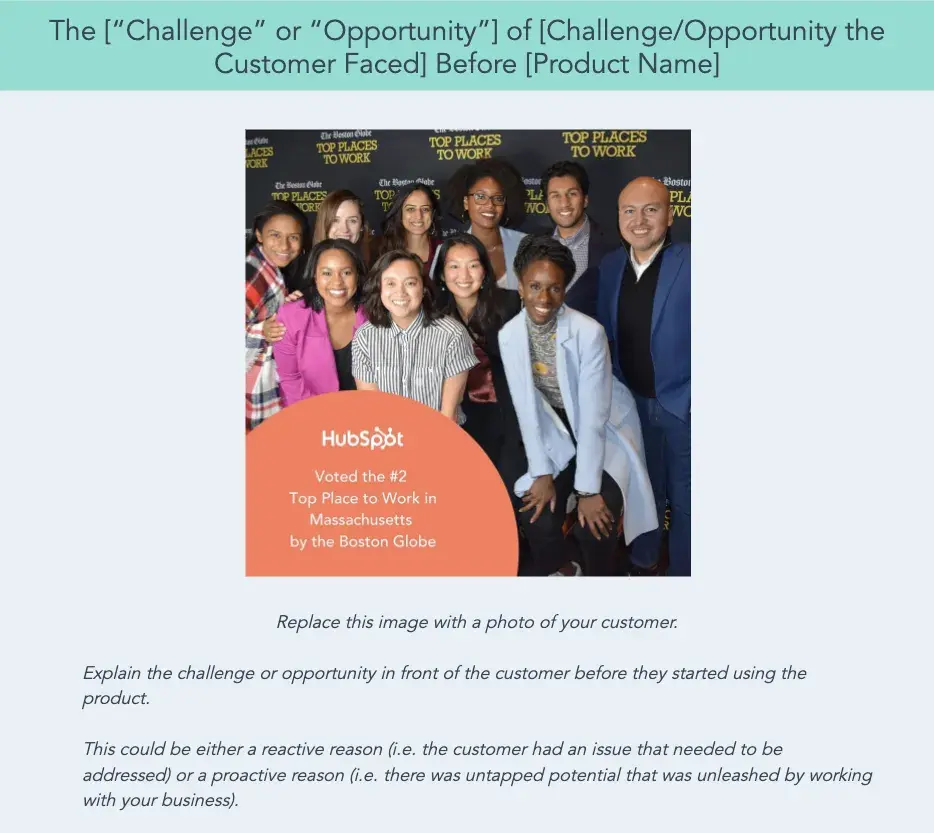

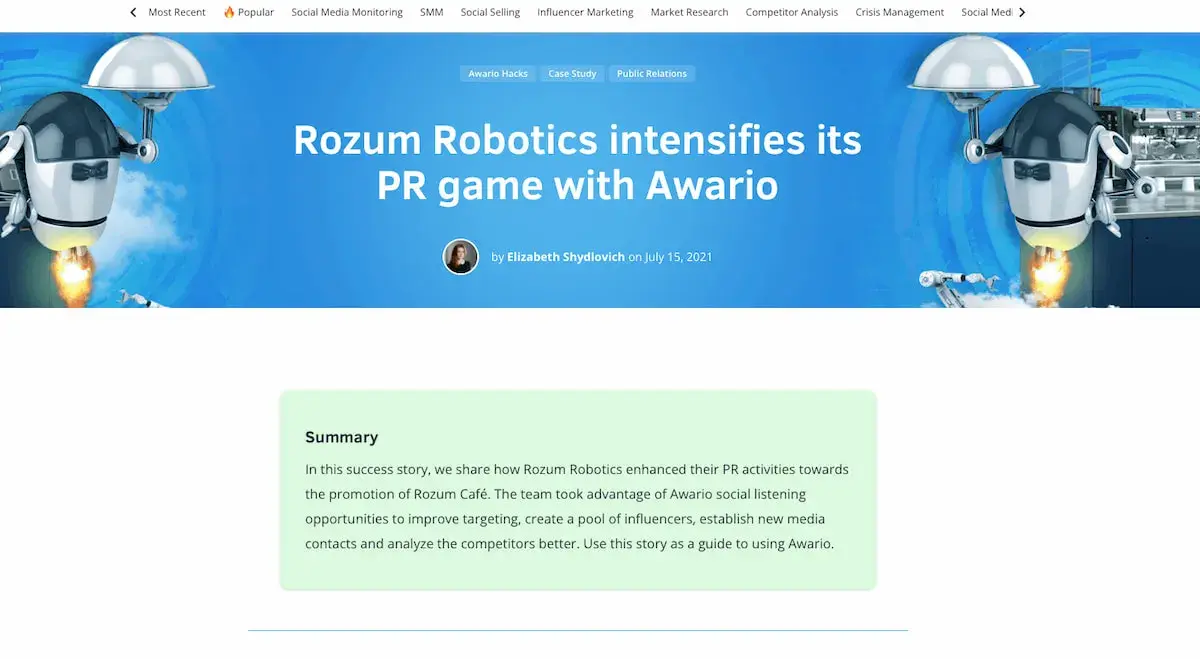

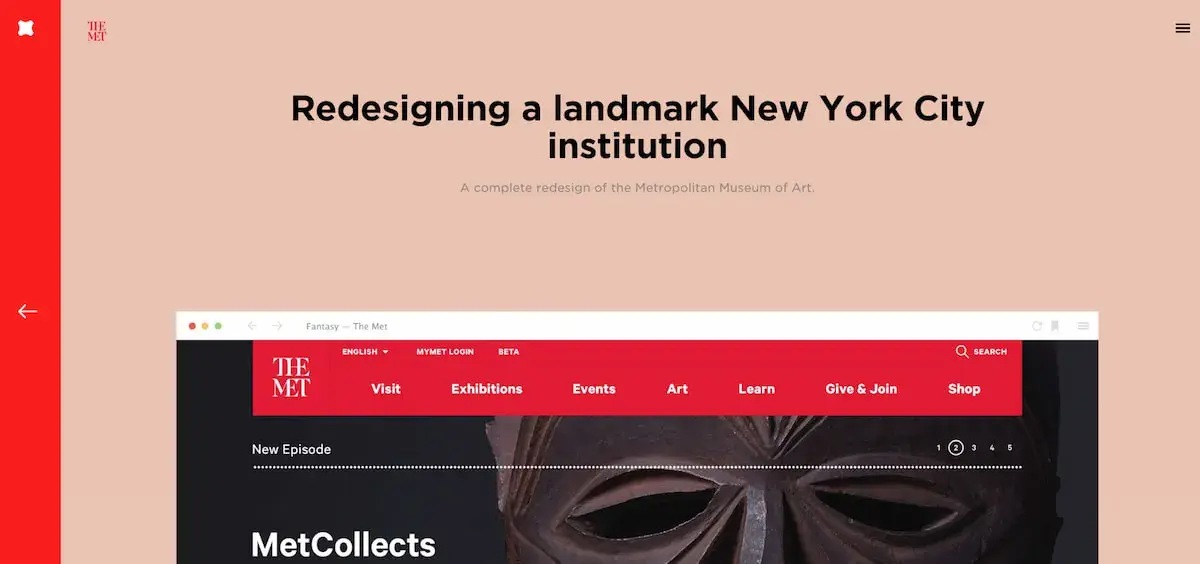
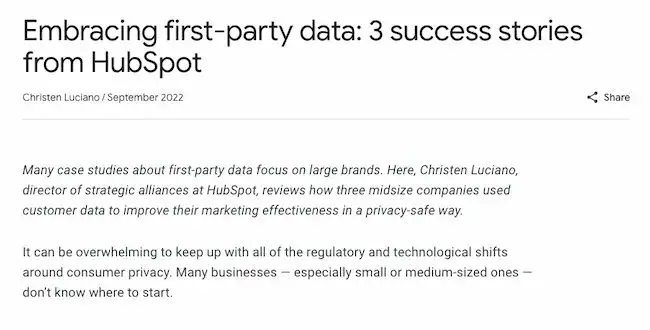

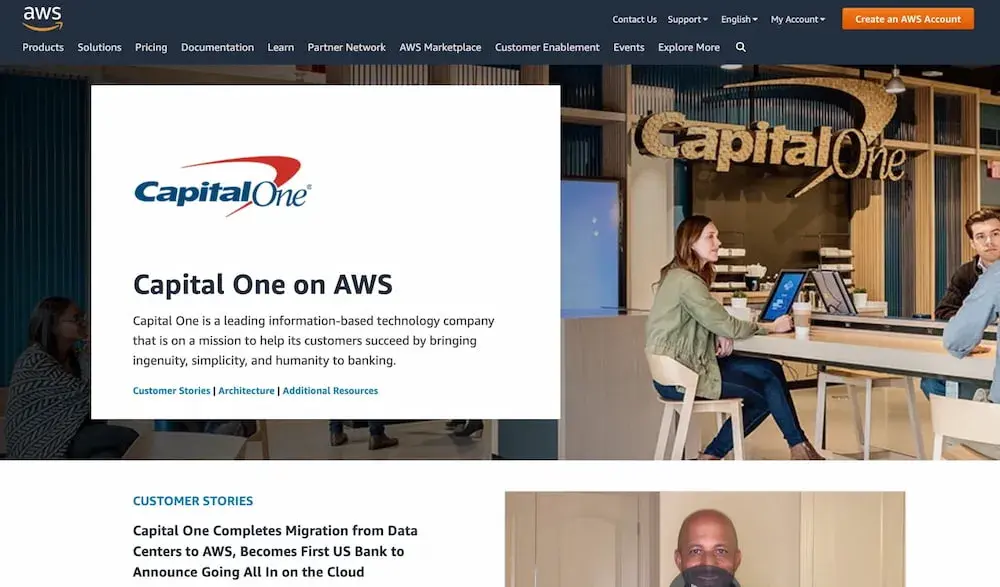


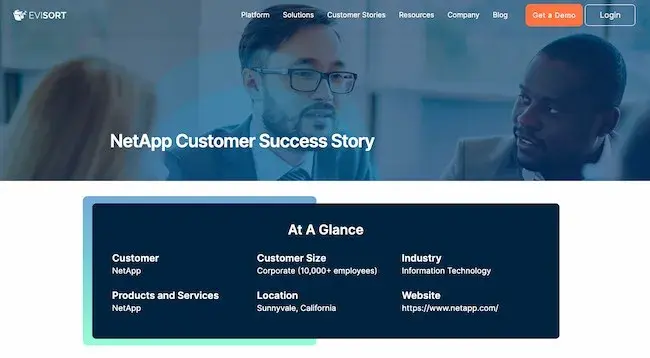

11. " Copernicus Land Monitoring – CLC+ Core ," by Cloudflight
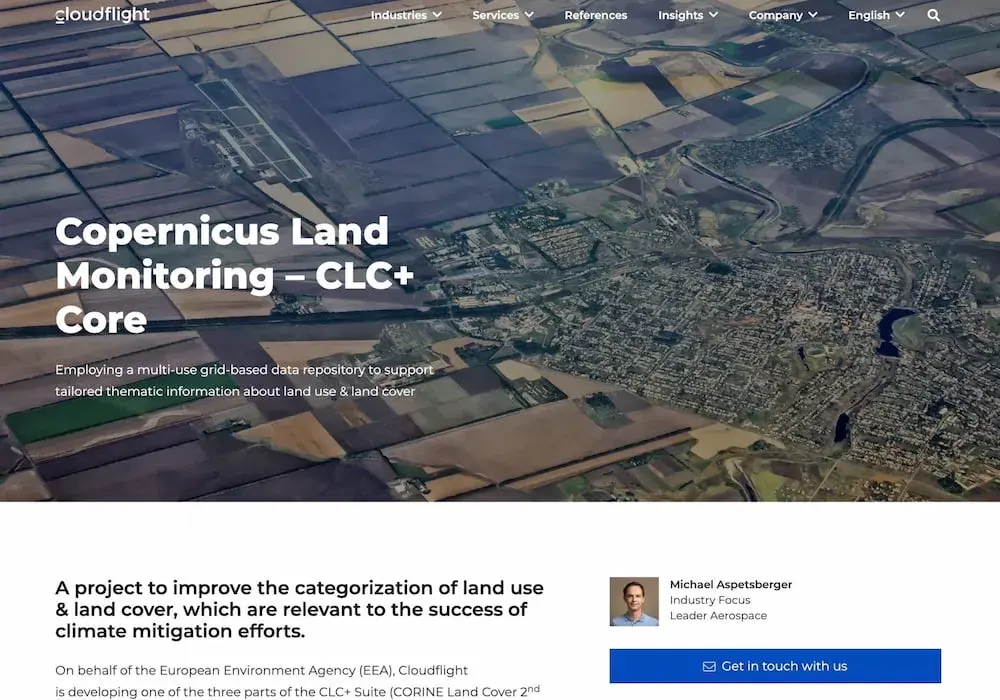

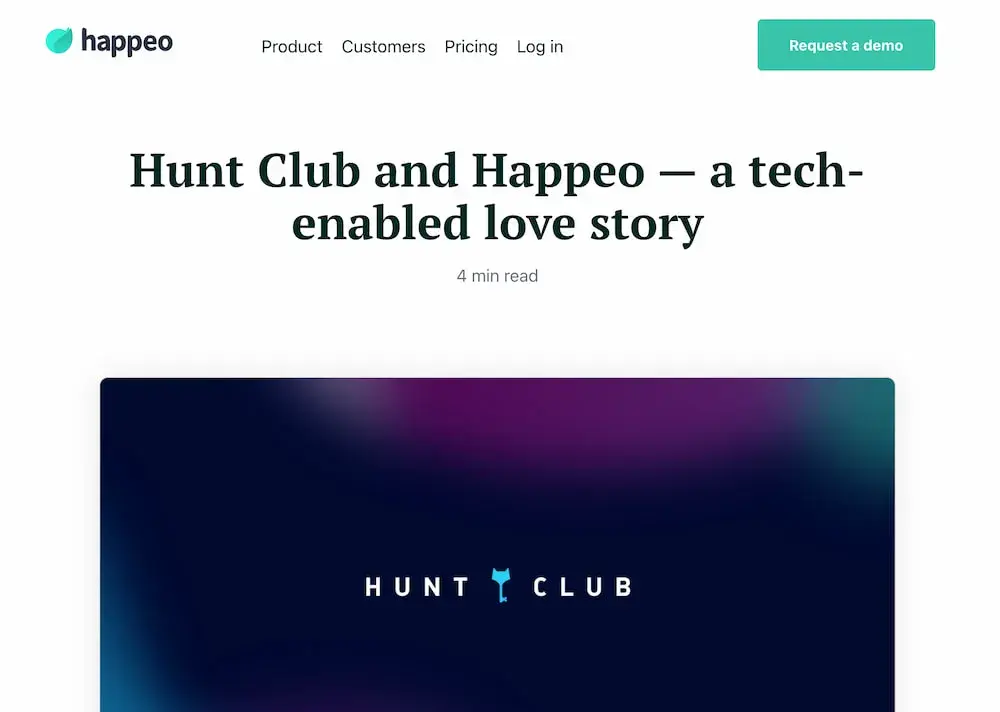
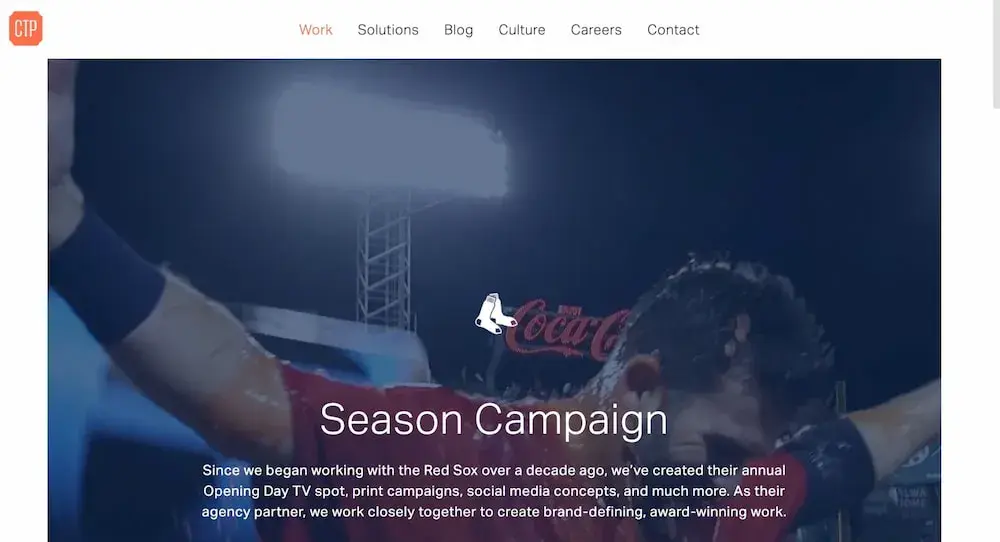
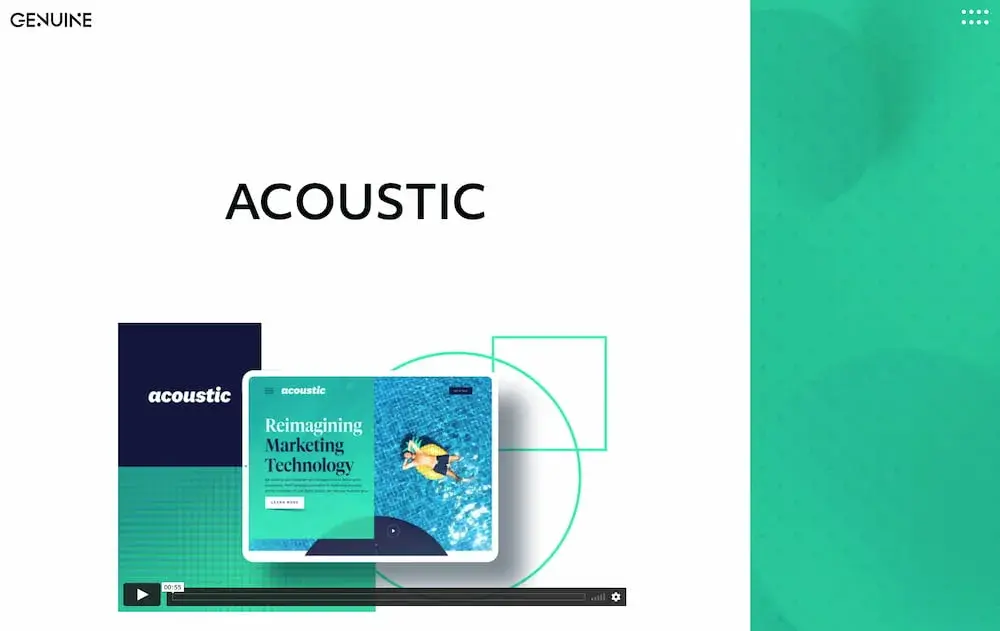
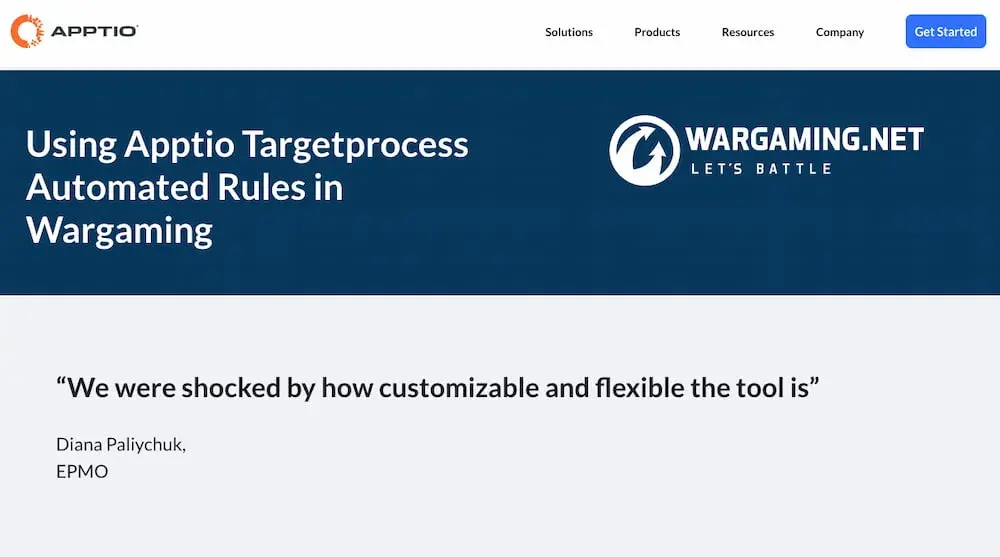
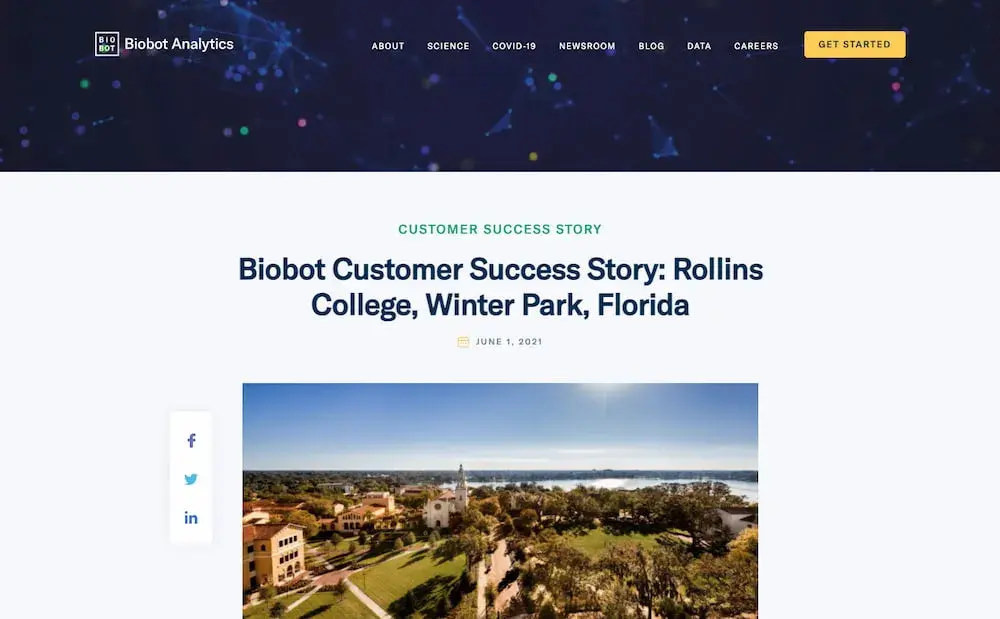
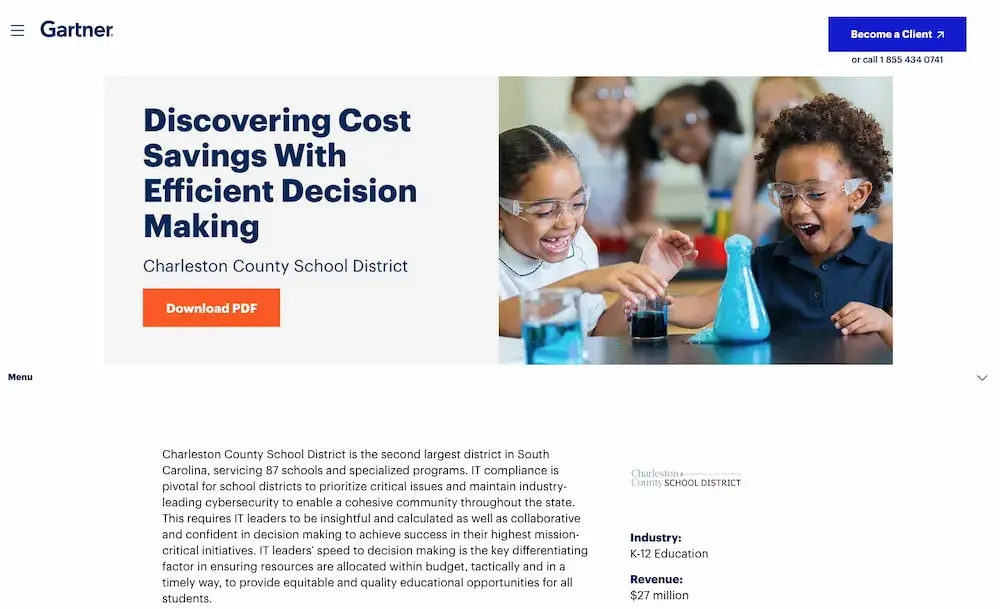
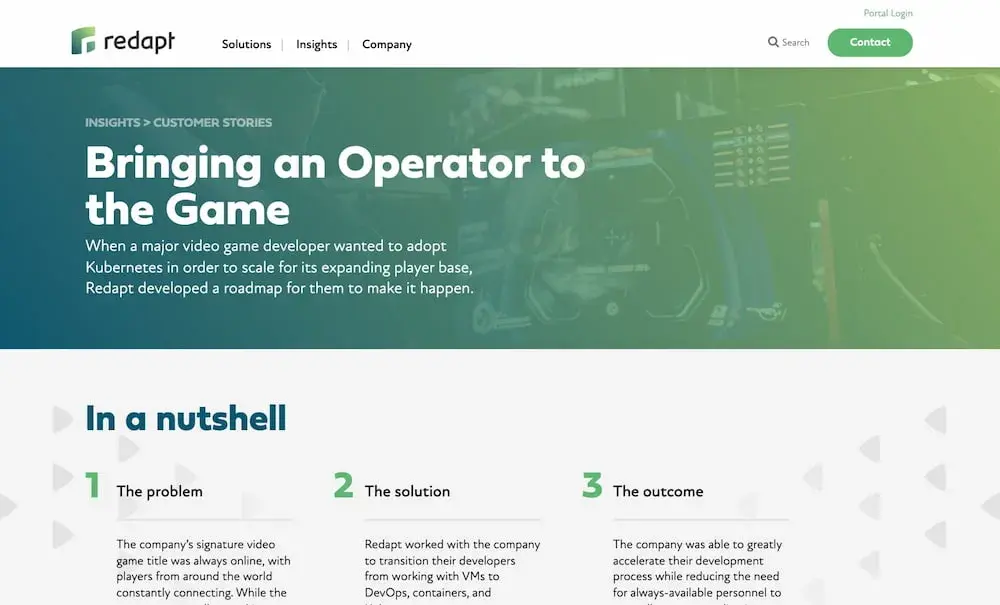

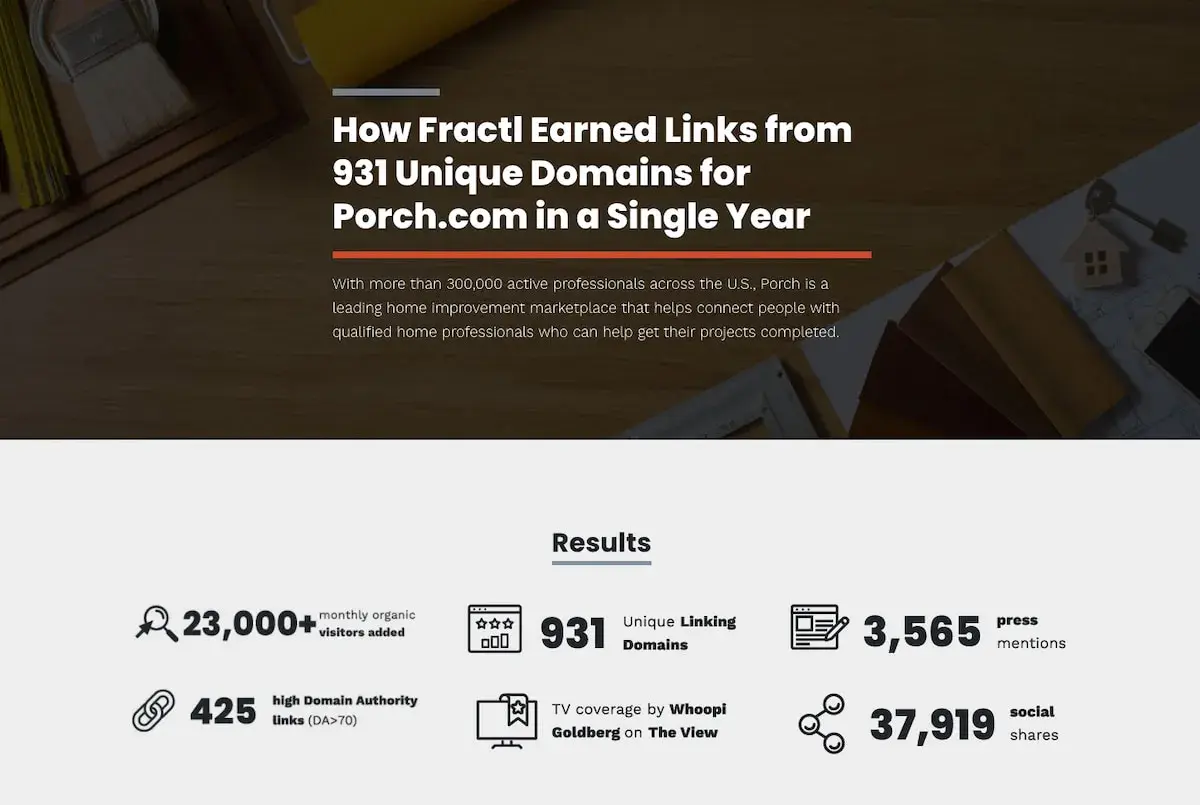
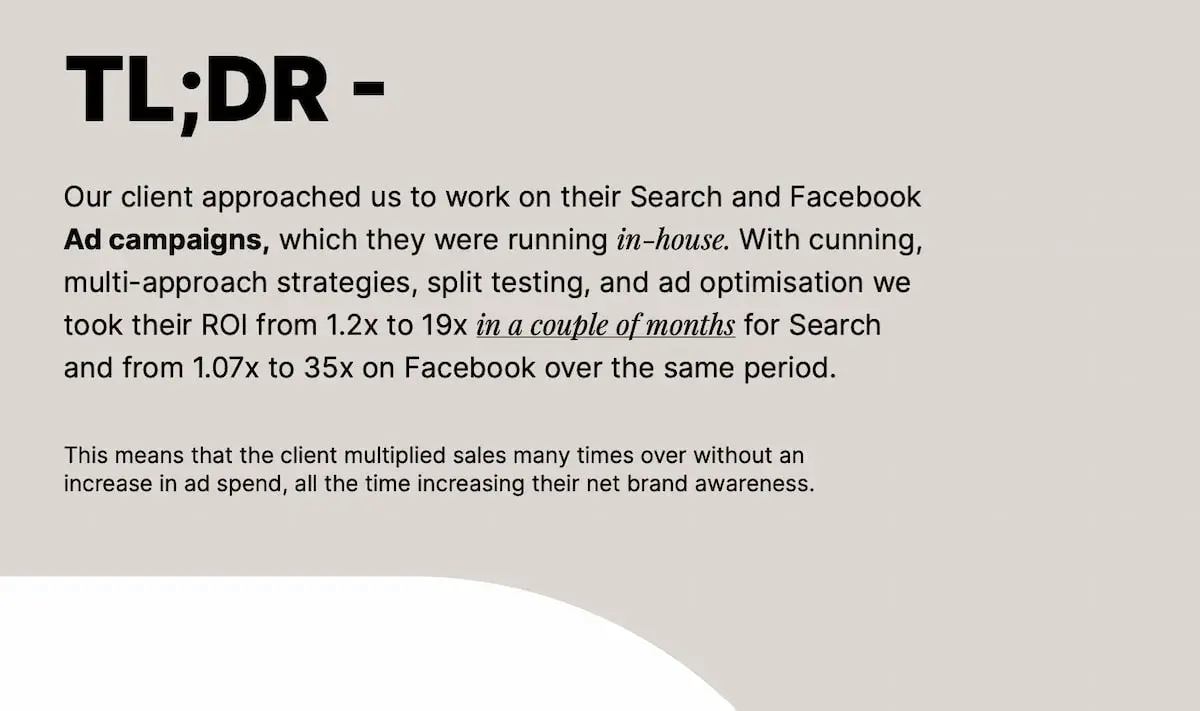
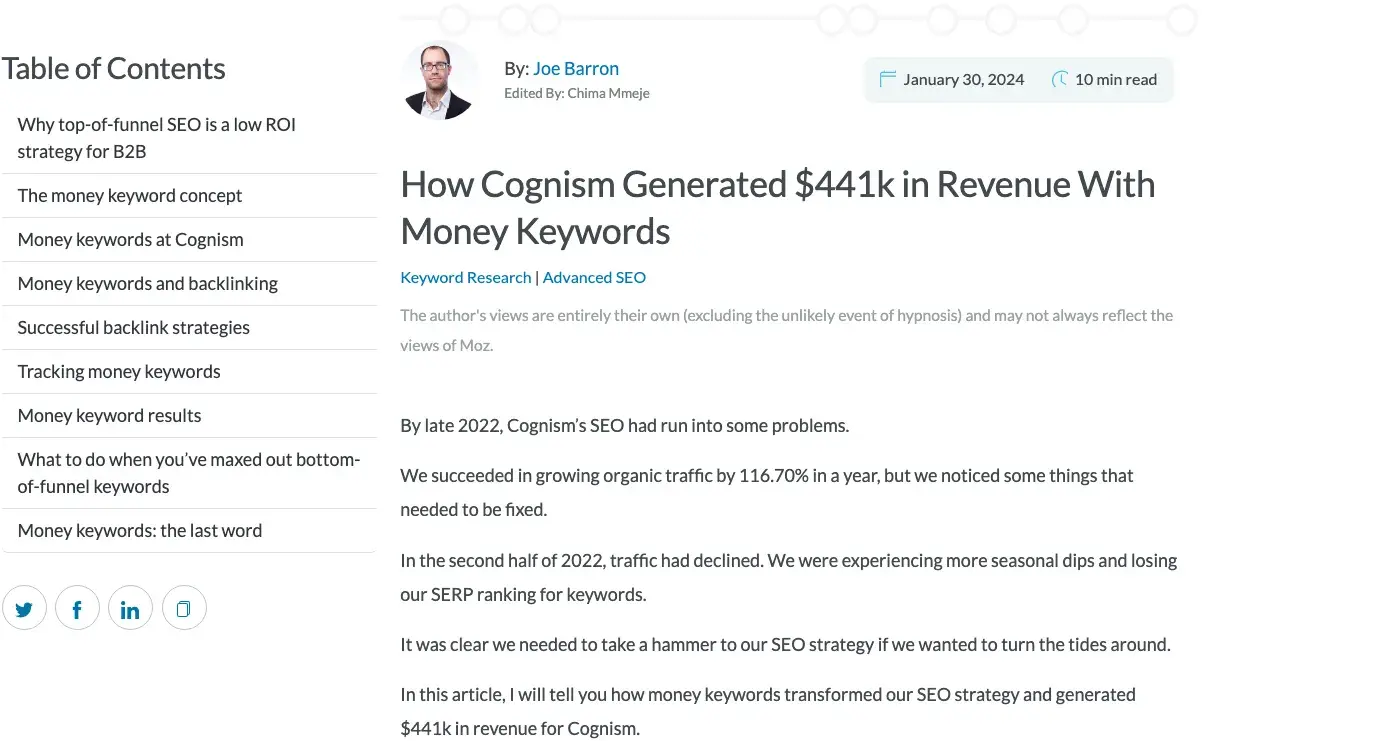
How to Write a Case Study: Bookmarkable Guide & Template
![case studys 7 Pieces of Content Your Audience Really Wants to See [New Data]](https://knowledge.hubspot.com/hubfs/contenttypes.webp)
7 Pieces of Content Your Audience Really Wants to See [New Data]

How to Market an Ebook: 21 Ways to Promote Your Content Offers
![case studys How to Write a Listicle [+ Examples and Ideas]](https://www.hubspot.com/hubfs/listicle-1.jpg)
How to Write a Listicle [+ Examples and Ideas]
![case studys What Is a White Paper? [FAQs]](https://53.fs1.hubspotusercontent-na1.net/hubfs/53/business%20whitepaper.jpg)
What Is a White Paper? [FAQs]

What is an Advertorial? 8 Examples to Help You Write One

How to Create Marketing Offers That Don't Fall Flat

20 Creative Ways To Repurpose Content

16 Important Ways to Use Case Studies in Your Marketing

11 Ways to Make Your Blog Post Interactive
Showcase your company's success using these free case study templates.
The weekly email to help take your career to the next level. No fluff, only first-hand expert advice & useful marketing trends.
Must enter a valid email
We're committed to your privacy. HubSpot uses the information you provide to us to contact you about our relevant content, products, and services. You may unsubscribe from these communications at any time. For more information, check out our privacy policy .
This form is protected by reCAPTCHA and the Google Privacy Policy and Terms of Service apply.
You've been subscribed
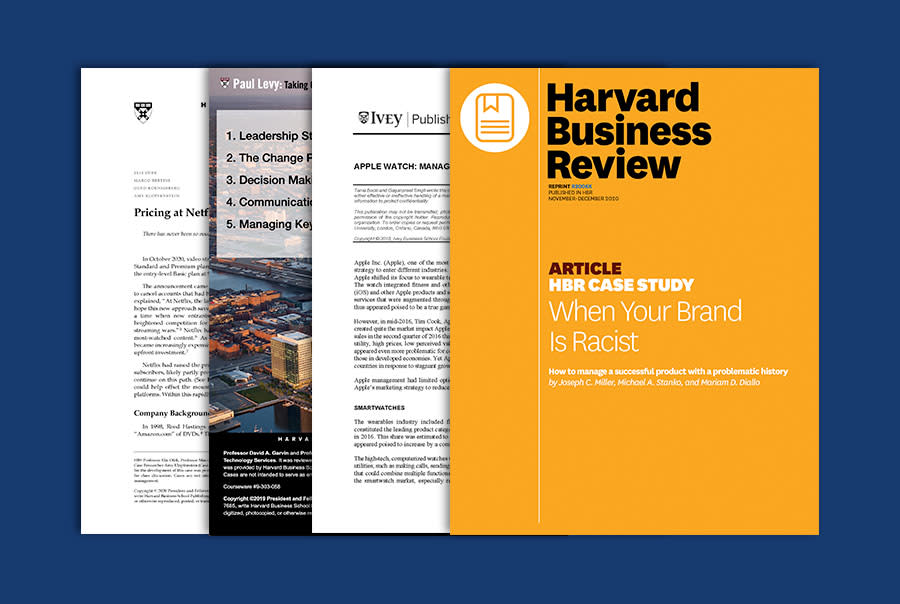
Prepare your students to navigate business challenges by immersing them in real-world scenarios.
Transform business education
Bring excitement into your classroom with engaging case discussions and introduce students to the challenge and fun of making important decisions.
Illustrate business concepts
Help students learn by doing with over 50,000+ cases featuring real-world business scenarios spanning across multiple areas of business.
Encourage new ways of thinking
Student build confidence and critical thinking skills while learning to express their ideas and convince others, setting them up for success in the real world.
Explore Different Types of Cases
Find cases that meet your particular needs.
New! Quick Cases
Quickly immerse students in focused and engaging business dilemmas. No student prep time required.
Traditional cases from HBS and 50+ leading business schools.
Multimedia Cases
Cases that keep students engaged with video, audio, and interactive components.
Search Cases in Your Discipline
Select a discipline and start browsing available cases.
- Business & Government Relations
- Business Ethics
- Entrepreneurship
- General Management
- Human Resource Management
- Information Technology
- International Business
- Negotiation
- Operations Management
- Organizational Behavior
- Service Management
- Social Enterprise
Fundamentals of Case Teaching
Our new, self-paced, online course guides you through the fundamentals for leading successful case discussions at any course level.
Case Companion: Build Students’ Confidence in Case Analysis
Case Companion is an engaging and interactive introduction to case study analysis that is ideal for undergraduates or any student new to learning with cases.
Discover Trending Cases
Stay up to date on cases from leading business schools.
Unilever's New Global Strategy: Competing through…
Innovation at uber: the launch of express pool, amazon.com, 2021, amazon in 2024, chase sapphire: creating a millennial cult brand, ment.io: knowledge analytics for team decision…, predicting consumer tastes with big data at gap, vispera: visual intelligence for retail, sustainability at ikea group, fuyao glass america: sourcing decision, discover new ideas for your courses.
Course Explorer lets you browse learning materials by topic, curated by our editors, partners, and faculty from leading business schools.
Teach with Cases
Explore resources designed to help you bring the case method into your classroom.
Inspiring Minds Articles on Case Teaching
Insights from leading educators about teaching with the case method.
Book: Teaching with Cases: A Practical Guide
A book featuring practical advice for instructors on managing class discussion to maximize learning.
Webinar: How ChatGPT and Other AI Tools Can Maximize the Learning Potential of Your Case-Based Classes
Register now.
Supplements: Inside the Case
Teaching tips and insights from case authors.
Guide: Teaching Cases Online
A guide for experienced educators who are new to online case teaching.
Educator Training: Selecting Cases to Use in Your Classes
Find the right materials to achieve your learning goals.
Educator Training: Teaching with Cases
Key strategies and practical advice for engaging students using the case method.
Frequently Asked Questions
What support can I offer my students around analyzing cases and preparing for discussion?
Case discussions can be a big departure from the norm for students who are used to lecture-based classes. The Case Analysis Coach is an interactive tutorial on reading and analyzing a case study. The Case Study Handbook covers key skills students need to read, understand, discuss and write about cases. The Case Study Handbook is also available as individual chapters to help your students focus on specific skills.
How can I transfer my in-person case teaching plan to an online environment?
The case method can be used in an online environment without sacrificing its benefits. We have compiled a few resources to help you create transformative online learning experiences with the case method. Learn how HBS brought the case method online in this podcast , gather some quick guidance from the article " How to Teach Any Case Online ", review the Teaching Cases Online Guide for a deep dive, and check out our Teaching Online Resources Page for more insights and inspiration.
After 35 years as an academic, I have come to the conclusion that there is a magic in the way Harvard cases are written. Cases go from specific to general, to show students that business situations are amenable to hard headed analysis that then generalize to larger theoretical insights. The students love it! Akshay Rao Professor, General Mills Chair in Marketing at the University of Minnesota
We use cookies to understand how you use our site and to improve your experience, including personalizing content. Learn More . By continuing to use our site, you accept our use of cookies and revised Privacy Policy .

A Detailed Case Study Guide: Everything You Need To Know!
Published on: Dec 10, 2024
Last updated on: Dec 10, 2024

People also read
How To Write A Case Study - Format Explained With Examples
Effective Case Study Examples - Real-Life Scenarios To Guide Your Research
Share this article
Do you need help understanding how to create a compelling case study? You’re not alone!
For many, the concept can feel nerve-wracking, from figuring out the right structure to presenting data effectively. Without a clear roadmap, a case study can end up confusing or, worse, dull to your audience.
But don't worry—this guide will simplify everything you need to know, step-by-step. From defining its purpose to working through each component, we’ll turn your case study from a complex project into a powerful storytelling tool.
Ready to dive in? Let’s start with the basics, learning the case study meaning first.
On This Page On This Page -->
What Is A Case Study?
A case study is an in-depth, detailed examination of a particular subject—often a real-life scenario, business, individual, or project. It is intended to draw out insights, analyze outcomes, and identify particular patterns.
By focusing on specific examples, such a study goes deep into the "how" and "why" of a situation. It offers readers a clear understanding of complex processes and solutions.
Purpose Of A Case Study
The major goal of conducting a case study is to explore the practical implications and effectiveness of specific strategies. This is to uncover what works (and what doesn’t) in real-world applications.
This approach helps learners, researchers, or professionals apply valuable findings to similar situations, making case studies powerful mediums for learning and decision-making.
Case Studies Distinctive Features
A case study stands out due to its unique approach and analytical depth, characterized by these key traits:
- Real-World Context: Focuses on understanding events or scenarios as they naturally occur.
- Personal Perspective: Emphasizes individual viewpoints to capture deeper, subjective experiences.
- In-Depth Qualitative Focus: Utilizes qualitative research to explore complex aspects beyond the quantitative methods.
- Detailed Analysis: Involves a thorough, close-up look at specific cases to uncover rich details.
- Surprising Discoveries: Often reveals unexpected insights that challenge or enhance existing knowledge.
How To Write A Case Study
Crafting a compelling case study requires a blend of strategic insight and careful research. By following essential steps, you can create a study that offers valuable information and resonates with your target audience.
Clarify Your Objective
Every study should start with a clear goal. Establishing your objective means identifying why the study is needed, whether it's to solve a problem, demonstrate a concept, or provide valuable insights into a particular situation.
This focus will keep your study on track and relevant, helping readers understand the intent behind your research and analysis.
Identify & Understand Your Target Readers
Knowing who will read your study shapes how you present information. Define your audience carefully, whether it’s business professionals, academic researchers, or general readers.
This ensures the content is tailored to their interests and comprehension level, making your study more impactful and accessible.
Consider Possible Outcomes
Think about the potential consequences your study could reveal and how they might influence your audience or contribute to existing knowledge.
Anticipating these possible insights helps you steer your research and focus on aspects that could have the most significant impact, ascertaining your study remains relevant and insightful.
Gather Credible Evidence
The strength of any study lies in reliable information. Compile a list of reputable sources, such as academic journals, trustworthy publications, and expert interviews, to back your findings.
Quality sources lend credibility to your study, making your conclusions more persuasive and well-grounded.
Highlight Core Findings & Solutions
After analyzing the case, highlight the main solutions or findings that address the objective. By focusing on the most effective or innovative solutions, you provide readers with actionable insights that they can apply in similar situations.
This emphasis on practical takeaways confirms the value of your study extends beyond just theory.
Case Study Format
Crafting a case study requires a structured approach to clearly present the research and findings.
Here’s a streamlined case study template for organizing each section:
Case Study Examples For Students
Exploring different case study samples can provide students with valuable insights into effective structure, analysis, and presentation techniques.
Here are a few well-crafted case study PDFs to guide and inspire your projects.
Bhopal Gas Tragedy Case Study
Business Case Study
Politics Case Study
Medicine Case Study
UX Case Study
Case Study Method In Psychology
Types Of Case Studies
Case studies come in various forms, each tailored to meet specific research goals and insights:
Problem-Solving Case Study
Designed to identify and tackle specific issues within a particular setting, such as an organization, community, or industry.
This type is hands-on and practical, often used in business or healthcare contexts, where the objective is to diagnose a problem and develop strategies or solutions to address it.
By examining real-world obstacles and devising actionable remedies, problem-solving case studies are valuable for organizations looking to overcome challenges and improve performance.
Descriptive Case Study
Focuses on providing an in-depth snapshot of a particular situation, phenomenon, or event. Rather than aiming to influence outcomes or solve a problem, they rigorously document what is happening within a set timeframe.
Researchers gather observations and details to create a holistic picture, which can be helpful for further analysis or for those seeking to understand a topic without altering it.
This approach is frequently used in social sciences, where it provides insights that help contextualize and explain real-world scenarios.
Collective Case Study
These involve examining several cases simultaneously or consecutively to discover patterns or similarities across them.
By comparing multiple instances within a similar context, experimenters can draw generalizable conclusions and uncover shared factors that might not be visible in single-case studies.
This type of study is particularly useful in fields like education and public health, where observing groups of related cases reveals trends and helps inform broader solutions or policies.
Explanatory Case Study
This study is used to investigate the causal mechanisms behind specific events or phenomena. Researchers dig into the "why" and "how" of an occurrence, exploring factors that influenced the outcome.
By clarifying these cause-and-effect relationships, explanatory case studies provide insights that are essential for fields that require evidence-based reasoning, such as policy development or scientific research.
This type is ideal for studying complex situations where understanding underlying reasons is crucial.
Exploratory Case Study
It is typically conducted to pave the way for more in-depth future research on a new or relatively unknown topic. They help define questions, establish priorities, and provide preliminary data that can serve as a foundation for further investigation.
This type of study is often seen in emerging fields or novel research areas, allowing researchers to gain preliminary insights and determine the direction of more detailed studies.
Instrumental Case Study
In such a study, the case itself is not as important as the insights it provides into a larger issue. This approach uses a particular instance as a "tool" to understand broader phenomena, trends, or concepts.
By examining a specific example, researchers can apply what they learn to a bigger picture, often informing theory or policy.
Instrumental case studies are useful in fields like psychology, where a single case can offer valuable information about common human behaviors or societal trends.
Intrinsic Case Study
This type of study is conducted when researchers have a genuine interest in a particular case that stands out due to its unique characteristics.
This study is less about applying findings to broader contexts and more about understanding the case itself, often for its uniqueness, rarity, or novelty.
Intrinsic case studies are common in areas like medicine, where a rare medical case might be examined to gain specialized insights without aiming for generalizability.
Pros & Cons Of Case Studies
Case studies bring unique strengths and challenges to research, helping to uncover detailed concepts while posing certain limitations.
Useful Tips For Writing An Effective Case Study
Developing an impactful case study involves clear structure, thorough analysis, and attention to detail. Here are essential tips to guide you:
- Organize the study into distinct sections, ensuring smooth flow and proper credit to sources.
- Document observations and underline crucial details for easier analysis.
- Identify the primary challenges and brainstorm viable solutions to address them.
- Support your points with factual data and credible sources for added reliability.
- Assess both the positives and negatives to provide a balanced perspective.
- Keep the study aligned with its main purpose to maximize relevance.
- Enhance understanding by incorporating relatable, practical examples.
- Proofread and refine your study to optimize accuracy and readability.
Case studies are invaluable tools across various fields, providing in-depth insights that foster understanding and innovation. From examining historical events to analyzing business strategies and psychological phenomena, they reveal the intricate dynamics of human experience and decision-making.
By adopting a structured approach to case study research, writers and researchers can effectively convey complex information and derive meaningful conclusions.
Whether you’re a student looking to enhance your academic projects or a professional aiming to leverage case studies for business growth, the insights drawn from this guide will serve you well.
For those seeking expert assistance, consider our college essay writing service to help you craft compelling case studies. Additionally, visit our ‘ buy case study ’ page to get solutions tailored to your specific needs. Empower your academic journey with our support!
Frequently Asked Questions
Who are the subjects of your case studies.
Case study subjects are groups of individuals selected based on specific criteria relevant to the case study research design and topic. These groups of people can include:
- Organizations
- Or Any Stakeholders
directly related to the case being studied. The selection process ensures that participants provide valuable insights that contribute to a comprehensive understanding of the individual case.
Where should one find information for a case study? -
Information for a case study can be obtained from various data sources, including:
- primary data through surveys, interviews, and observations ,
- as well as secondary data from academic journals, industry reports, and online databases .
Utilizing multiple sources confirms a comprehensive understanding of the case and enriches the analysis.
What are the key components of a professional case study?
A professional case study should include:
- a table of contents
- an introduction outlining the purpose
- background information on the subject
- a clear problem statement
- research questions
- and a literature review
It must also:
- detail the methodology used for data collection and analysis
- present findings with supporting evidence
- and conclude with implications and recommendations
Including references fosters credibility and allows readers to explore further.
When is the ideal time to conduct a case study?
Conducting a case study is ideal when existing data is limited, or when a rich, qualitative understanding is essential for making informed decisions.
What are some of the best topics for performing an academic case study?
Here are ten compelling case study topics across various academic subjects, each designed to inspire in-depth research and analysis:
- Psychology: The Impact of Social Media on Adolescent Mental Health
- Biology: The Effect of Climate Change on Coral Reefs
- Physics: The Implications of Quantum Computing on Data Security
- Computer Science: The Role of Artificial Intelligence in Healthcare
- Mathematics: Predictive Modeling in Epidemiology
- Environmental Science: The Effectiveness of Plastic Bans in Urban Areas
- Economics: The Economic Impact of Universal Basic Income
- Sociology: The Dynamics of Gentrification in Urban Neighborhoods
- Education: The Role of Remote Learning in Shaping Student Engagement & Performance
- Public Health: The Influence of Food Desserts on Community Health Outcomes
Cathy A. (Thesis, Education, Literature)
For more than five years now, Cathy has been one of our most hardworking authors on the platform. With a Masters degree in mass communication, she knows the ins and outs of professional writing. Clients often leave her glowing reviews for being an amazing writer who takes her work very seriously.
Need Help With Your Essay?
Also get FREE title page, Turnitin report, unlimited revisions, and more!
Keep reading

OFF ON CUSTOM ESSAYS
Essay Services
- Argumentative Essay Service
- Descriptive Essay Service
- Persuasive Essay Service
- Narrative Essay Service
- Analytical Essay Service
- Expository Essay Service
- Comparison Essay Service
Writing Help
- Term Paper Writing Help
- Research Writing Help
- Thesis Help
- Dissertation Help
- Report Writing Help
- Speech Writing Help
- Assignment Help
Legal & Policies
- Privacy Policy
- Cookies Policy
- Terms of Use
- Refunds & Cancellations
- Our Writers
- Success Stories
- Our Guarantees
- Affiliate Program
- Referral Program
Disclaimer: All client orders are completed by our team of highly qualified human writers. The essays and papers provided by us are not to be used for submission but rather as learning models only.

Educational resources and simple solutions for your research journey

What is a Case Study in Research? Definition, Methods, and Examples
Case study methodology offers researchers an exciting opportunity to explore intricate phenomena within specific contexts using a wide range of data sources and collection methods. It is highly pertinent in health and social sciences, environmental studies, social work, education, and business studies. Its diverse applications, such as advancing theory, program evaluation, and intervention development, make it an invaluable tool for driving meaningful research and fostering positive change.[ 1]
Table of Contents
What is a Case Study?
A case study method involves a detailed examination of a single subject, such as an individual, group, organization, event, or community, to explore and understand complex issues in real-life contexts. By focusing on one specific case, researchers can gain a deep understanding of the factors and dynamics at play, understanding their complex relationships, which might be missed in broader, more quantitative studies.
When to do a Case Study?
A case study design is useful when you want to explore a phenomenon in-depth and in its natural context. Here are some examples of when to use a case study :[ 2]
- Exploratory Research: When you want to explore a new topic or phenomenon, a case study can help you understand the subject deeply. For example , a researcher studying a newly discovered plant species might use a case study to document its characteristics and behavior.
- Descriptive Research: If you want to describe a complex phenomenon or process, a case study can provide a detailed and comprehensive description. For instance, a case study design could describe the experiences of a group of individuals living with a rare disease.
- Explanatory Research: When you want to understand why a particular phenomenon occurs, a case study can help you identify causal relationships. A case study design could investigate the reasons behind the success or failure of a particular business strategy.
- Theory Building: Case studies can also be used to develop or refine theories. By systematically analyzing a series of cases, researchers can identify patterns and relationships that can contribute to developing new theories or refining existing ones.
- Critical Instance: Sometimes, a single case can be used to study a rare or unusual phenomenon, but it is important for theoretical or practical reasons. For example , the case of Phineas Gage, a man who survived a severe brain injury, has been widely studied to understand the relationship between the brain and behavior.
- Comparative Analysis: Case studies can also compare different cases or contexts. A case study example involves comparing the implementation of a particular policy in different countries to understand its effectiveness and identifying best practices.

How to Create a Case Study – Step by Step
Step 1: select a case .
Careful case selection ensures relevance, insight, and meaningful contribution to existing knowledge in your field. Here’s how you can choose a case study design :[ 3]
- Define Your Objectives: Clarify the purpose of your case study and what you hope to achieve. Do you want to provide new insights, challenge existing theories, propose solutions to a problem, or explore new research directions?
- Consider Unusual or Outlying Cases: Focus on unusual, neglected, or outlying cases that can provide unique insights.
- Choose a Representative Case: Alternatively, select a common or representative case to exemplify a particular category, experience, or phenomenon.
- Avoid Bias: Ensure your selection process is unbiased using random or criteria-based selection.
- Be Clear and Specific: Clearly define the boundaries of your study design , including the scope, timeframe, and key stakeholders.
- Ethical Considerations: Consider ethical issues, such as confidentiality and informed consent.
Step 2: Build a Theoretical Framework
To ensure your case study has a solid academic foundation, it’s important to build a theoretical framework:
- Conduct a Literature Review: Identify key concepts and theories relevant to your case study .
- Establish Connections with Theory: Connect your case study with existing theories in the field.
- Guide Your Analysis and Interpretation: Use your theoretical framework to guide your analysis, ensuring your findings are grounded in established theories and concepts.
Step 3: Collect Your Data
To conduct a comprehensive case study , you can use various research methods. These include interviews, observations, primary and secondary sources analysis, surveys, and a mixed methods approach. The aim is to gather rich and diverse data to enable a detailed analysis of your case study .
Step 4: Describe and Analyze the Case
How you report your findings will depend on the type of research you’re conducting. Here are two approaches:
- Structured Approach: Follows a scientific paper format, making it easier for readers to follow your argument.
- Narrative Approach: A more exploratory style aiming to analyze meanings and implications.
Regardless of the approach you choose, it’s important to include the following elements in your case study :
- Contextual Details: Provide background information about the case, including relevant historical, cultural, and social factors that may have influenced the outcome.
- Literature and Theory: Connect your case study to existing literature and theory in the field. Discuss how your findings contribute to or challenge existing knowledge.
- Wider Patterns or Debates: Consider how your case study fits into wider patterns or debates within the field. Discuss any implications your findings may have for future research or practice.

What Are the Benefits of a Case Study
Case studies offer a range of benefits , making them a powerful tool in research.
1. In-Depth Analysis
- Comprehensive Understanding: Case studies allow researchers to thoroughly explore a subject, understanding the complexities and nuances involved.
- Rich Data: They offer rich qualitative and sometimes quantitative data, capturing the intricacies of real-life contexts.
2. Contextual Insight
- Real-World Application: Case studies provide insights into real-world applications, making the findings highly relevant and practical.
- Context-Specific: They highlight how various factors interact within a specific context, offering a detailed picture of the situation.
3. Flexibility
- Methodological Diversity: Case studies can use various data collection methods, including interviews, observations, document analysis, and surveys.
- Adaptability: Researchers can adapt the case study approach to fit the specific needs and circumstances of the research.
4. Practical Solutions
- Actionable Insights: The detailed findings from case studies can inform practical solutions and recommendations for practitioners and policymakers.
- Problem-Solving: They help understand the root causes of problems and devise effective strategies to address them.
5. Unique Cases
- Rare Phenomena: Case studies are particularly valuable for studying rare or unique cases that other research methods may not capture.
- Detailed Documentation: They document and preserve detailed information about specific instances that might otherwise be overlooked.
What Are the Limitations of a Case Study
While case studies offer valuable insights and a detailed understanding of complex issues, they have several limitations .
1. Limited Generalizability
- Specific Context: Case studies often focus on a single case or a small number of cases, which may limit the generalization of findings to broader populations or different contexts.
- Unique Situations: The unique characteristics of the case may not be representative of other situations, reducing the applicability of the results.
2. Subjectivity
- Researcher Bias: The researcher’s perspectives and interpretations can influence the analysis and conclusions, potentially introducing bias.
- Participant Bias: Participants’ responses and behaviors may be influenced by their awareness of being studied, known as the Hawthorne effect.
3. Time-Consuming
- Data Collection and Analysis: Gathering detailed, in-depth data requires significant time and effort, making case studies more time-consuming than other research methods.
- Longitudinal Studies: If the case study observes changes over time, it can become even more prolonged.
4. Resource Intensive
- Financial and Human Resources: Conducting comprehensive case studies may require significant financial investment and human resources, including trained researchers and participant access.
- Access to Data: Accessing relevant and reliable data sources can be challenging, particularly in sensitive or proprietary contexts.
5. Replication Difficulties
- Unique Contexts: A case study’s specific and detailed context makes it difficult to replicate the study exactly, limiting the ability to validate findings through repetition.
- Variability: Differences in contexts, researchers, and methodologies can lead to variations in findings, complicating efforts to achieve consistent results.
By acknowledging and addressing these limitations , researchers can enhance the rigor and reliability of their case study findings.
Key Takeaways
Case studies are valuable in research because they provide an in-depth, contextual analysis of a single subject, event, or organization. They allow researchers to explore complex issues in real-world settings, capturing detailed qualitative and quantitative data. This method is useful for generating insights, developing theories, and offering practical solutions to problems. They are versatile, applicable in diverse fields such as business, education, and health, and can complement other research methods by providing rich, contextual evidence. However, their findings may have limited generalizability due to the focus on a specific case.

Frequently Asked Questions
Q: What is a case study in research?
A case study in research is an impactful tool for gaining a deep understanding of complex issues within their real-life context. It combines various data collection methods and provides rich, detailed insights that can inform theory development and practical applications.
Q: What are the advantages of using case studies in research?
Case studies are a powerful research method, offering advantages such as in-depth analysis, contextual insights, flexibility, rich data, and the ability to handle complex issues. They are particularly valuable for exploring new areas, generating hypotheses, and providing detailed, illustrative examples that can inform theory and practice.
Q: Can case studies be used in quantitative research?
While case studies are predominantly associated with qualitative research, they can effectively incorporate quantitative methods to provide a more comprehensive analysis. A mixed-methods approach leverages qualitative and quantitative research strengths, offering a powerful tool for exploring complex issues in a real-world context. For example , a new medical treatment case study can incorporate quantitative clinical outcomes (e.g., patient recovery rates and dosage levels) along with qualitative patient interviews.
Q: What are the key components of a case study?
A case study typically includes several key components:
- Introductio n, which provides an overview and sets the context by presenting the problem statement and research objectives;
- Literature review , which connects the study to existing theories and prior research;
- Methodology , which details the case study design , data collection methods, and analysis techniques;
- Findings , which present the data and results, including descriptions, patterns, and themes;
- Discussion and conclusion , which interpret the findings, discuss their implications, and offer conclusions, practical applications, limitations, and suggestions for future research.
Together, these components ensure a comprehensive, systematic, and insightful exploration of the case.
References
- de Vries, K. (2020). Case study methodology. In Critical qualitative health research (pp. 41-52). Routledge.
- Fidel, R. (1984). The case study method: A case study. Library and Information Science Research , 6 (3), 273-288.
- Thomas, G. (2021). How to do your case study. How to do your case study , 1-320.
Editage All Access is a subscription-based platform that unifies the best AI tools and services designed to speed up, simplify, and streamline every step of a researcher’s journey. The Editage All Access Pack is a one-of-a-kind subscription that unlocks full access to an AI writing assistant, literature recommender, journal finder, scientific illustration tool, and exclusive discounts on professional publication services from Editage.
Based on 22+ years of experience in academia, Editage All Access empowers researchers to put their best research forward and move closer to success. Explore our top AI Tools pack, AI Tools + Publication Services pack, or Build Your Own Plan. Find everything a researcher needs to succeed, all in one place – Get All Access now starting at just $14 a month !
Related Posts

How to write a book chapter?

Thesis and Dissertation — What’s the difference?

IMAGES
COMMENTS
Feb 18, 2022 · Orders for Yale SOM case studies increased by almost 50% compared to 2020. The top 40 cases were supervised by 19 different Yale SOM faculty members, several supervising multiple cases.
May 8, 2019 · A case study is a detailed study of a specific subject, such as a person, group, place, event, organization, or phenomenon. Case studies are commonly used in social, educational, clinical, and business research.
Dec 12, 2024 · Case studies provide a detailed narrative of how your product or service was used to solve a problem. Examples are general illustrations and are not necessarily real-life scenarios. Case studies are often used for marketing purposes, attracting potential customers and building trust.
Dec 5, 2024 · A case study is an in-depth, structured examination of how a product or service solved a problem for a client. It includes several sections that outline the problem, proposed solution, and outcome, along with data that highlights the success of the solution. Case studies can range in length; most are a single page or two, but some may be a few ...
Mar 26, 2024 · A case study is a research method that involves a detailed examination of a subject (the “case”) within its real-life context. Case studies are used to explore the causes of underlying principles, behaviors, or outcomes, providing insights into the nuances of the studied phenomena.
Sep 5, 2024 · To help you create an attractive and high-converting case study, we've put together a list of some of our favorites. This list includes famous case studies in marketing, technology, and business. These studies can show you how to frame your company's offers in a way that is useful to your audience.
Prepare your students to navigate business challenges by immersing them in real-world scenarios. Bring excitement into your classroom with engaging case discussions and introduce students to the challenge and fun of making important decisions.
Dec 10, 2024 · Without a clear roadmap, a case study can end up confusing or, worse, dull to your audience. But don't worry—this guide will simplify everything you need to know, step-by-step. From defining its purpose to working through each component, we’ll turn your case study from a complex project into a powerful storytelling tool. Ready to dive in?
Nov 27, 2024 · Case studies often combine data from multiple sources to gain holistic insight into a topic. Though case studies generally involve qualitative methods, quantitative methods may also be used.
Jun 27, 2024 · A case study method involves a detailed examination of a single subject, such as an individual, group, organization, event, or community, to explore and understand complex issues in real-life contexts.